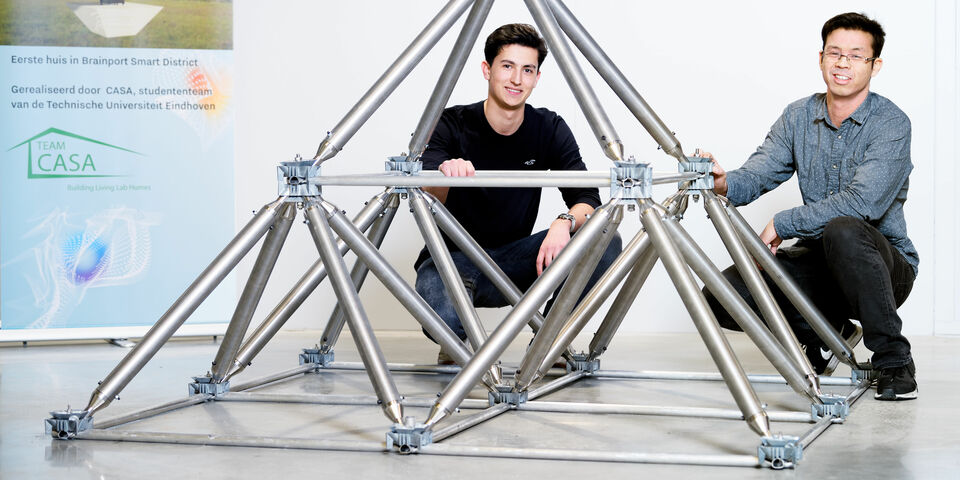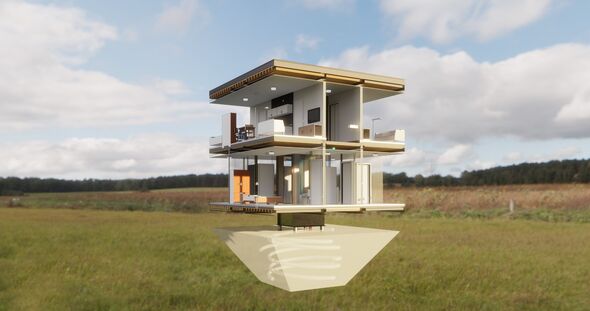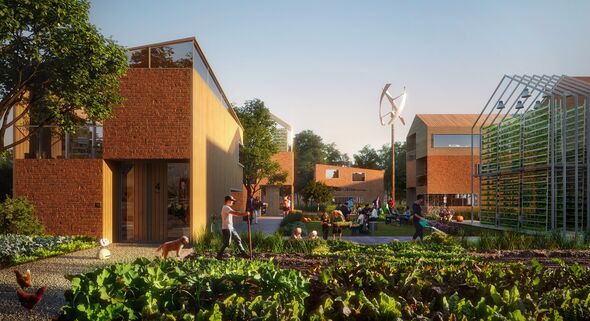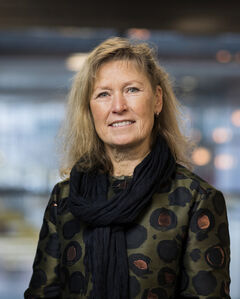Building efficiently without concrete
A comfortable, affordable and sustainable house: that is what the students of Team CASA are designing. They hope to accelerate the energy transition in the building sector and show what can be achieved with technologies available today. CASA 1.0 is one of the first projects to be built in the future proof Brainport Smart District in Helmond-Brandevoort. But before construction begins, a lot of testing and optimizing needs to be done.
Each year, building and demolition companies produce an enormous amount of debris. It was 24 million tons last year, more than twice the total of waste volume produced by Dutch households. Because sustainability has now turned from hype into bitter necessity, the building sector needs to change its course, according to a group of enthusiastic TU/e students.
They founded Team CASA in 2016 and started with the design of houses that are circular and future proof. Now, just a few years later, they are on the verge of building their home of the future. It will be the example of new, alternative housing for the future, team members Camiel Mourisse and Thành Nguyên (see picture above) say.
“CASA stands for comfortable, affordable, sustainable and alternative,” Mourisse explains. “These are our core values when it comes to sustainable building. It’s obvious that the building sector needs to become more sustainable. The sector mostly works with concrete and bricks. Producing and transporting these materials requires a lot of energy, and the houses are not flexible. A new way of designing and the use of different kinds of material will make it easier to adjust, renovate and reuse homes.”
Novelties
Anyone entering Team CASA’s workplace in Matrix will immediately notice the scale model of CASA 1.0, prominently placed on the table. A modern house with much incidence of light, a noticeable square core, and a pyramid of tubes that will be hidden from view once underground. The floor space of over 120 square meters can be arranged at will and has room for two apartments on the upper floor and one for seniors on the ground floor. Nguyên: “A sustainable home for the future needs to be senior-friendly and if necessary, several generations need to be able to live under the same roof. The design can be easily adjusted, so there’s something for everyone.”
There is no shortage of novelties. The above-mentioned square core – the service core – holds all the (maintenance)installations the occupants do not need to access daily. But they need to be able to access the core when necessary, and also remotely. The service core is made of steel and is part of the bearing construction. In a later phase, a combination with the STETS, which stands for Seasonal Thermal Energy Storage, might also be an option. The STETS is a water tank with a pipe system that is used for heat and cold storage.
With this unique foundation, Team CASA want to show that building without concrete is a very real option, Mourisse explains. “Thinking outside the box is essential to us. How can we combine and integrate techniques and use space and energy more efficiently that way? We also work together with business companies to realize innovative combinations. For example, our house has an integrated Energyroof from SolarTech that generates both electricity and heat. That heat can be stored underground and saved for later use. And the DUCO EcoBox extracts heat from ‘old’ ventilation air, which can then be used to heat the water from the faucets. Efficiency is the keyword.”
In the workplace, the team members show an intriguing pyramid made of steel tubes. “This is just a small part of the final construction,” Nguyên explains. In cooperation with TU/e’s Equipment & Prototype Center, also located in Matrix, Team CASA are optimizing the water storage and bearing for a next house. Originally, this construction was intended for CASA 1.0, but recent tests showed that too many adjustments need to be made, which isn’t feasible on short notice. A setback for the team, but this does not change the fact that the planning for the construction of CASA 1.0 is well underway. Mourisse: “We use prefab elements in order to keep our house affordable and flexible. That way, we can build a habitable house within a week. As we speak, we’re in the process of ordering the materials.”
The location has been determined already: CASA 1.0 will be one of the first houses in the new and future proof Brainport Smart District in Helmond-Brandevoort. Over the next few years, this enormous living lab, co-initiated by Dean of the Department of the Built Environment Elphi Nelissen (see text box) intends to integrate innovative technology, sustainability and participation in a social and attractive living environment. After a short period during which CASA 1.0 will function as a test house, the first occupants will be allowed to move in. Other CASA houses are expected to follow soon. Nguyên: “We just found out that we’ve received the Energy Investment Allowance (EIA). That will make it possible for us to build eight terraced houses that will be even more efficient. Hopefully with the intended STES foundation construction.”
The enthusiastic student team will be spending long hours at their workplace in the coming period. CASA 1.0 needs to be finished by early October and a next team has already started an entirely new project aimed at reusing materials from the Paviljoen buildings. In addition, the team is planning a Building Event to celebrate the official opening of CASA 1.0, because there has been enough talk about sustainability, green building and putting a halt to climate change, the members of Team CASA believe. “The building sector may be a slow-moving system, but we want to show the world that quick changes and innovative building initiatives are possible indeed,” says Nguyên.
“The building sector can learn a lot from Team CASA”
“It is very important to support ambitious students who have innovative ideas, and Team CASA is a good example. The building sector can learn a lot from their circular and energy-efficient way of building. The Netherlands has expressed the ambition to have a circular building economy by 2050 and this house is a very successful prototype. We consult witch each other regularly and it’s a good thing that CASA 1.0 will be one of the first houses in the Brainport Smart District. A uniquely ambitious project at a unique location: all the transitions we are going through will be applied to one living area. In addition to technology, we also focus on social cohesion. It will be the living area of the future in many ways. Data collection plays a role as well, but we will make sure residents get to decide what data they wish to submit. CASA 1.0 is a learning experience in that respect as well, because what can data tell us about how residents live, and how will we optimize that information? A living lab in which we will make important progress together with Team CASA.”





Discussion